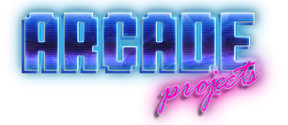nnap
Grand Master
+1 on the JammASD, Love that thing.I'm using a JammASD to connect my MiSTer in to my cab since many months ago.
Also I have a JammaCON and it works like a charm too with MiSTer.
+1 on the JammASD, Love that thing.I'm using a JammASD to connect my MiSTer in to my cab since many months ago.
Also I have a JammaCON and it works like a charm too with MiSTer.
Misteraddons.comWhat the best source for the mister add-ons? Trying to see if I put one of these together.
Ugh, the 'fix' is basically copying the jamma-sd hack using the USB id of the j-pac. I really wish they could just implement this in a normal way without pr-device workarounds. Spent a little time today to set up a virtual linux machine to compile main mister to see if I can add a workaround that applies to the JVS-PAC 2.JPAC works fine that two player issue was fixed by a kind user a week back through a pull request. You need an IO board for the VGA out though.
I was going to order from misteraddons, but man, he wants about $80 USD to ship to Japan.Misteraddons.comWhat the best source for the mister add-ons? Trying to see if I put one of these together.
Yeah, sorry. I threw that together to unblock the J-PAC for myself. The change should really work with any USB "keyboard" device. Take a look at https://misterfpga.org/viewtopic.php?f=32&t=448 and see if the JVS-PAC 2 "automagically" works with the proper VID/PID (assuming I haven't given you this info elsewhere). I agree it's a hack and would love to see someone implement true key mapping support for devices like this.Ugh, the 'fix' is basically copying the jamma-sd hack using the USB id of the j-pac. I really wish they could just implement this in a normal way without pr-device workarounds. Spent a little time today to set up a virtual linux machine to compile main mister to see if I can add a workaround that applies to the JVS-PAC 2.JPAC works fine that two player issue was fixed by a kind user a week back through a pull request. You need an IO board for the VGA out though.
Using a HDMI->VGA dongle myself and works great.
Test another source. That's the quickest way to see what's up with the monitor.Any suggestions for me?
Not criticizing the author of the fix (seriously), but more miste main in general and the architect of the input system specificallyYeah, sorry. I threw that together to unblock the J-PAC for myself.

That's the trick I suppose - since it's my first cab, I also don't own any pcbs. I could try a PC out to the j-pac, but I'm not sure how I'd go about generating a 15khz signal on it.Test another source. That's the quickest way to see what's up with the monitor.Any suggestions for me?
Time to borrow a board from a local. Or buy your favorite game.That's the trick I suppose - since it's my first cab, I also don't own any pcbs. I could try a PC out to the j-pac, but I'm not sure how I'd go about generating a 15khz signal on it.
The best way I can describe what it looks like is that everything just has a yellow filter applied over it. Stuff that is supposed to be white is yellow.
Is your sync on green turned on? You sure its yellow not green?That's the trick I suppose - since it's my first cab, I also don't own any pcbs. I could try a PC out to the j-pac, but I'm not sure how I'd go about generating a 15khz signal on it.Test another source. That's the quickest way to see what's up with the monitor.Any suggestions for me?
The best way I can describe what it looks like is that everything just has a yellow filter applied over it. Stuff that is supposed to be white is yellow.

I'm using the I/O board (6.0) connected to the J-Pac with the provided vga cable.Hmm could be a video DAC issue. Best to use JPAC only for controls and feed the video directly. Not sure if you are using the IO board or HDMI to VGA. If the IO board wasnt assembled well the maybe a resistor (video DAC) near the VGA port might be not installed/failed/is loose. I have never seen that tbh. If you are using a convertor that could be an issue. If using JPAC make sure you jumper it to pass through.
Can you post your Mister.ini here?
My problem ended up being something totally different - I had a monitor with a problem!
I haven't really dug in here but the sync levels are different between the IO board and direct video so maybe that's the issue. Glad you got it working!My problem ended up being something totally different - I had a monitor with a problem!
However, from what everyone tells me, and what I've observed also - color is still a bit funny through the IO board + J-Pac on arcade monitors. Direct video/HDMI adapter + J-Pac -> arcade monitor looks good.
